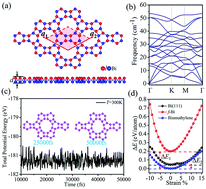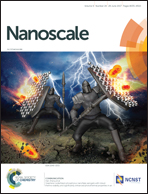First-principles prediction on bismuthylene monolayer as a promising quantum spin Hall insulator
Abstract
Two-dimensional (2D) large band-gap topological insulators (TIs) with highly stable structures are imperative for achieving dissipationless transport devices. However, to date, only very few materials have been experimentally observed to host the quantum spin Hall (QSH) effect at low temperature, thus obstructing their potential application in practice. Using first-principles calculations, herein, we predicted a new 2D TI in the porous allotrope of a bismuth monolayer, i.e. bismuthylene, its geometrical stability was confirmed via phonon spectrum and molecular dynamics simulations. Analysis of the electronic structures reveal that bismuthylene is a native QSH state with a band gap as large as 0.28 eV at the Γ point, which is larger than that (0.2 eV) of the buckled Bi (111) and suitable for room temperature applications. Note that it has a much lower energy than buckled Bi (111) and flattened Bi films; thus, bismuthylene is feasible for experimental realization. Interestingly, the topological properties can be retained under strains within the range of −6%–3% and electrical fields up to 0.8 eV Å−1. A heterostructure was constructed by sandwiching bismuthylene between BN sheets, and the non-trivial topology of bismuthylene was retained with a sizable band gap. These findings provide a platform to design a large-gap QSH insulator based on the 2D bismuthylene films, which show potential applications in spintronic devices.



 Please wait while we load your content...
Please wait while we load your content...